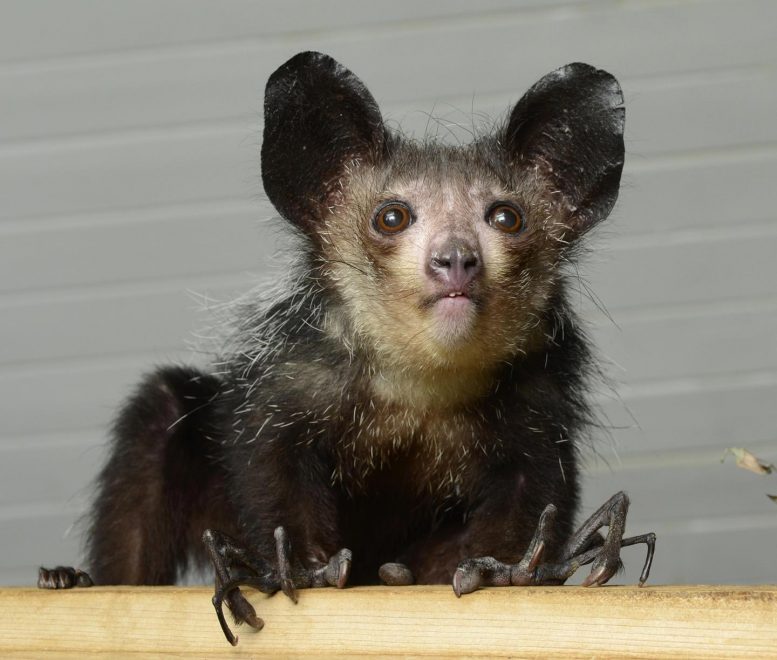Popular Reads
Top Results
Can't find what you're looking for?
View all search resultsPopular Reads
Top Results
Can't find what you're looking for?
View all search resultsTwo thumbs up - or is it four? Odd lemur has evolved extra 'finger'
For a strange little lemur native to Madagascar that boasts one of the most unusual hands in the animal kingdom, a "high five" is more like a "trick six".
Change text size
Gift Premium Articles
to Anyone
F
or a strange little lemur native to Madagascar that boasts one of the most unusual hands in the animal kingdom, a "high five" is more like a "trick six."
Scientists have discovered that this nocturnal tree dweller, called an aye-aye, possesses an anatomical structure that serves as an extra thumb to go along with its five spindly fingers, an evolutionary innovation helpful for grasping small objects and branches.
This "pseudothumb", as North Carolina State University biologist Adam Hartstone-Rose calls it, represents one of the few examples since the very first land-dwelling vertebrates appeared almost 400 million years ago of a creature acquiring through evolution the equivalent of an extra digit.
It is not an actual finger, but rather an evolutionary improvisation that builds on the wrist structure, with an augmented wrist bone accompanied by a cartilaginous extension, three muscles that move it and even a fingerprint. The pseudothumb is strong, able to exert an amount of force equal to almost half its total body weight.
"The weirdest primate is even weirder than we knew," said Hartstone-Rose, who lead the research published this week in the American Journal of Physical Anthropology.
The giant panda also possesses a pseudothumb - with strikingly similar anatomy - that helps the bear with grasping bamboo.
Read also: Luxury hotel launches yoga with lemurs
Lemurs are among the most primitive members of the primate mammalian group that also includes monkeys, apes and humans.
The aye-aye is known for its huge bat-like ears, the largest relative brain size of any lemur, rodent-like ever-growing incisors - unique among primates - and strange hands. It has long fingers including its actual thumbs, and its middle fingers have a ball-and-socket joint like a person's shoulders - also unique among primates.
"The animals are crazy looking and their hands are so spindly that they really look like a pile of twigs. I usually describe the aye-aye as looking more or less like a mangy cat walking on spiders," Hartstone-Rose said.
"To some of us, aye-ayes are horrible looking. To others they are so ugly that they are cute. They sincerely look like something that Jim Henson created to bring an Edgar Allan Poe nightmare to life," Hartstone-Rose added, referring to the creator of "The Muppets" and the macabre 19th century writer.
The aye-aye's fingers are not great for grasping - hence the need for a pseudothumb - but are perfect for its unusual "tap foraging" behavior. It taps on rotting wood with its middle finger and listens for voids. Using bat-like echolocation, it creates a mental map of the paths carved by grubs. It then uses its chisel-like incisors to cut holes in those tubes and uses its swiveling finger to get at the grubs.
Digital reduction has been very common in evolution, as seen in dinosaurs like Tyrannosaurus rex and hoofed mammals like horses. An improvised extra digit is extremely rare, with just a few examples. Cotton rats have a pseudothumb and certain moles and extinct marine reptiles called ichthyosaurs evolved different forms of an extra digit.











